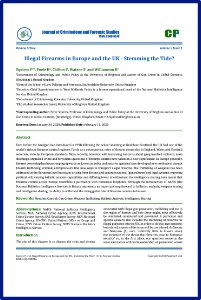By Europol
Terrorism remains a significant threat to the internal security of the European Union. Terrorists operate across borders, leveraging new technologies and modi operandi to target innocent people. EU law enforcement authorities, in particular the counter-terrorism community, remain vigilant and united in countering the threat. The EU Terrorism Situation and Trend Report (TE-SAT) 2023 contributes to this effort, by presenting prevalent terrorism trends in the EU. Terrorism constitutes an attack on our society intending to create fear and chaos among EU citizens. In 2022, 16 terrorist attacks took place in the EU and an additional 12 attacks failed or were foiled. While the attacks directly affected seven Member States, more Member States arrested suspects in terrorism-related cases. Tragically, four people were killed in terrorist attacks in the EU, two resulting from jihadist attacks and two from a right-wing terrorist attack. We honour the memory of all those lost to terrorism in 2022 and in previous years.
-
Member States continue to view jihadist terrorism as the most prominent terrorist threat to the EU despite the fact that the number of jihadist attacks has decreased compared to 2021 and 2020. The threat from right-wing terrorist lone actors, radicalised online, remains significant. Left-wing and anarchist terrorists and violent extremists continue to pose a threat to public safety and security in the EU. Additionally, the spread of propaganda online and its potential for radicalisation remains a key concern. Social isolation and the lack of a solid support system remain key vulnerabilities which terrorists take advantage of in order to propagate their messages and to recruit new followers. This is particularly worrying with the increasing number of young people, including minors, exposed to online terrorist propaganda. Furthermore, the terrorist and violent extremist environment is becoming more decentralised and volatile. Diffuse actors connect and inspire one another, uniting behind grievances beyond ideology or group affiliation. This context is ripe for self-radicalisation and for lone actors to begin engaging in attack planning, and poses significant challenges for preventing and combating terrorism and violent extremism in the EU.
Publications Office of the European Union, Luxembourg, 2023. 94p.





















